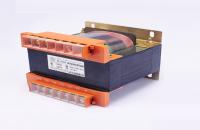
The application of multi-air gap segmented core in anti-dc bias transformer has become an important research direction in the field of power equipment. With the increasing prominence of the DC component problem in the power grid, the efficiency degradation and temperature rise problems caused by magnetic saturation in traditional transformer cores need to be solved urgently. The multi-air gap segmented core effectively disperses the local flux distortion caused by DC bias by dividing the overall core into multiple independent magnetic circuit units and setting up a dispersed air gap structure between each segment. This design not only improves the core's immunity to DC current, but also inhibits excessive concentration of the magnetic chain through the magneto-resistive effect of the air gap, thus reducing core losses and noise levels.
From the point of view of the operating principle, the multi-air gap segmented core breaks the closed magnetic circuit characteristic of the traditional core through physical segmentation. When the DC component intrudes into the transformer, the segmented structure forces the magnetic flux to reconfigure the path at the air gap, and the high reluctance characteristic of the air gap is used to weaken the dominance of the DC magnetic potential on the overall magnetic circuit. At the same time, the difference in reluctance of the core of each segment can form a local flux compensation mechanism to further balance the superimposed effect of AC and DC flux. This active adjustment capability enables the transformer to maintain high magnetic energy conversion efficiency under mixed AC and DC conditions, which is especially suitable for high-voltage DC transmission systems or new energy grid-connected scenarios with complex harmonic environments.

In practice, the optimised design of multi-gap segmented cores requires comprehensive consideration of the synergistic effects of the number of air gaps, distribution locations and segmentation ratios. For example, in the ultra-high voltage converter transformer, the asymmetric air gap layout can be targeted to suppress the DC bias component in a specific direction; in the distribution network anti-bias equipment, the uniform distribution of small air gap structure is more conducive to achieve a wide frequency range of flux balance. In addition, the stacking process and material selection of the segmented core also directly affect its anti-saturation performance, and the use of nanocrystalline alloys or high silicon steel and other low-loss materials can further improve the dynamic response characteristics of the core.
It is worth noting that the engineering application of this technology still faces the challenge of multi-physics field coupling analysis. Since the existence of an air gap changes the electromagnetic-mechanical-thermal coupling characteristics of the core, the impact of the segmented structure on the magnetic leakage distribution, vibration modes and heat dissipation efficiency needs to be accurately quantified through a combination of finite element simulation and experimental verification. For example, a case study of a DC bias management project shows that the transformer with a six-segment air-gap core design reduces the core loss by about 28% under the same DC injection conditions, and the temperature rise is controlled within 90% of that of a conventional core, which verifies the effectiveness of the scheme.
In the future, with the improvement of the smart grid's requirements for equipment adaptive capability, the multi-air gap segmented iron core will develop in the direction of dynamic adjustable structure. Through the introduction of magnetron materials or electromechanical linkage devices, real-time adjustment of air gap width can be achieved, which will enable the transformer to autonomously optimise the magnetic circuit parameters according to the DC bias strength. This intelligent evolution will not only expand the functional boundaries of traditional transformers, but also provide a more resilient solution for power quality management in complex grid environments.
The difference between 430 and 304 stainless steel
2022-12-010.2 mm high performance electrical steel is rolled out like this
2023-12-07Riots Among Employees in the industrial park of Delong Stainless Steel plant in Indonesia
2020-12-23Application of 304L and 316L stainless steel in low temperature environment
2024-06-07Hongwang Random grain stainless steel,showing spirit of contemporary art
2023-04-28Global Stainless Steel Prices Rising
2021-05-10






